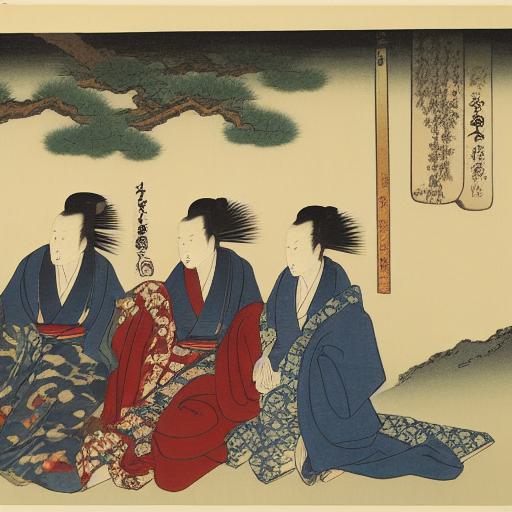Ukiyo-e art
Ukiyo-e is a traditional form of Japanese art that originated in the Edo period (1603-1867). The term “Ukiyo-e” can be translated as “pictures of the floating world” and refers to a style of art that depicted everyday life, leisure activities, landscapes, and historical events. Ukiyo-e prints were mass-produced using woodblock printing techniques, making them widely accessible to the general public and popularizing the art form.
Ukiyo-e prints were often created by a team of artists, including a designer who created the initial design, a carver who engraved the design onto a wooden block, and a printer who produced the final prints. The prints were typically produced in multiple colors, with each color requiring a separate block and printing process.
Features of Ukiyo-e art
One of the most notable features of Ukiyo-e art is its use of perspective and composition. Artists often used exaggerated perspective and bold compositions to create dynamic and visually striking images. They also incorporated decorative elements such as patterns and motifs to enhance the overall aesthetic of the print.
Ukiyo-e prints often depicted popular actors, courtesans, and other celebrities of the time, as well as landscapes, nature scenes, and historical events. They were highly influential in the development of modern art movements, including Impressionism and Art Nouveau.
What advantages does using AI algorithms to create art offer?
Creating art through artificial intelligence algorithms results in AI-generated art, which offers several benefits. One such benefit is the capability to produce images quickly and efficiently while exploring different styles and techniques. Designers can use this technology to design personalized and distinctive artwork that meets specific needs. Additionally, AI-generated art can foster inclusivity by allowing artists from diverse backgrounds to create artwork that reflects their experiences and viewpoints, ultimately boosting creativity. To further simplify the process, designers can seamlessly incorporate AI-generated artwork into their designs with the help of tools like Visual Paradigm Online.
How to write this prompt?
This AI image prompt is quite specific and contains various elements that influence the generated image. The prompt starts with a description of a close-up shot of a man standing in the snow. This detail provides a clear visual representation of the subject matter and helps the AI to generate a specific composition. The prompt also notes that this is fantasy art, which allows for more creative freedom in the generated image.
The next detail in the prompt is that the image is an official splash art with the style of League of Legends. This information is significant as it provides an established aesthetic for the AI to follow. Splash art is a type of promotional artwork used in video games, particularly in character introductions and updates. The style of League of Legends is often characterized by bold and dynamic compositions with exaggerated proportions, vibrant colors, and intricate details. Therefore, the AI will likely take these factors into account when generating the image.
The last part of the prompt specifies that the character in the image is Samira from League of Legends. This detail provides a reference point for the AI to work from and ensures that the generated image is recognizable as the character.
Overall, the individual parts of the prompt, such as the subject matter, style, and character reference, all play a significant role in shaping the generated image. The more specific and detailed the prompt, the more direction the AI has in creating an image that meets the desired criteria.


